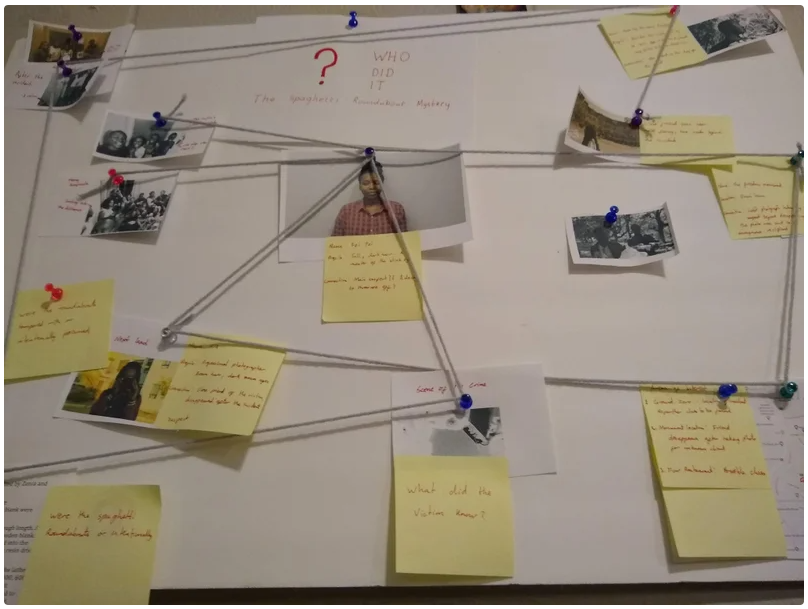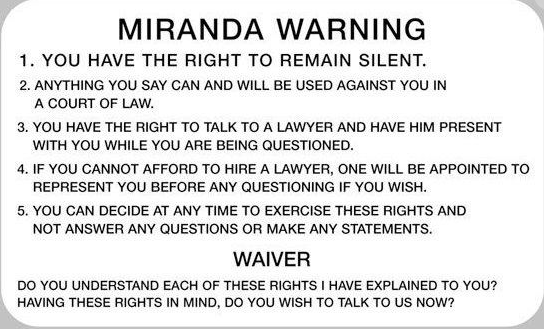Introduction to Law & Order inspired RPAs (L&O-RPAs)
These are RPA investigation activities based on episodes taken from the American TV show Law & Order. If possible, the teacher should watch the episodes before using these RPAs in class. This way the teacher can see that some extra-information was added to the cards and that some of the facts were changed slightly in order to allow for the activity to flow in the classroom.
Suggestions:
(1) It might be a good idea to keep a record of new vocabulary items.
(2) Students can write newspaper articles about the crime as the story unfolds.
(3) Students can create a detective board to keep a record of their findings, such as the one shown below.

Source: https://www.instructables.com/How-to-Make-a-Cool-Detective-Board/
How to facilitate a Law & Order inspired RPA (L&O-RPAs):
The L&O-RPA starts with a description of the crime scene, which is given in the first card. The teacher plays the role of the captain; therefore, guides the detectives (students) as well as receives the reports on the investigation. Students will take turns being detectives or people of interest in the investigation. Sometimes, they might also play the role of forensic doctors or other professionals.
Distribute a copy of the first card to all students and place one card in the center of the detective board. Together with the students, discuss the scene and encourage them to come up with their own ideas of what could have happened. At this point, it is important to clearly state the date of the crime. I suggest the use of a detective board and a timeline, which will be updated as the investigation unfolds. It is a good opportunity for students to learn and practice how to write in bullet form for concise note-taking. For example:

One idea for the timeline is to use a piece of string attached horizontally across a wall and clothespins to hold the posts and keep them in chronological order.
As the captain of the precinct, the teacher controls the pace of the investigation, so always discuss with students what they will do next, writing the possibilities on the board. It is the captain’s decision what the ‘detectives’ will do next.
Give out the cards to the students who will play the roles of the interviewees or other professionals. Tell them to study their roles and be prepared for the interview or report. Clarify any doubts and tell them to be prepared to use their imagination in case the ‘detectives’ ask them anything that is not on the card. Students can prepare at home or outside the class. The remaining students will be the detectives. Have them prepare some questions, if that is the case.
Note: I suggest that you give out the information “piece-meal”. For example, a character will only receive the information for the second interview when that happens; the murderer only knows that he/she is guilty during the last interview. Every time someone is being interviewed, the other students become “detectives”. It is also possible to have two or three interviews be conducted at the same time. After the interviews, the groups report their findings to the rest of the class and the captain. Don’t forget to keep the detective board and timeline updated. I strongly recommend that you have more than one interview per class because, otherwise, the role-play takes too long and students lose interest.
When they find the guilty party, teach them the Miranda Rights:

When the students find the guilty party, if possible, play the Law & Order episode the RPA was based on in class, but stop it before the jury gives out the verdict. Ask the class to play the role of the jury and decide on the verdict.
If possible, play the rest of the episode and discuss the verdict with the class. Do they agree with the verdict?


Feedback/Errata